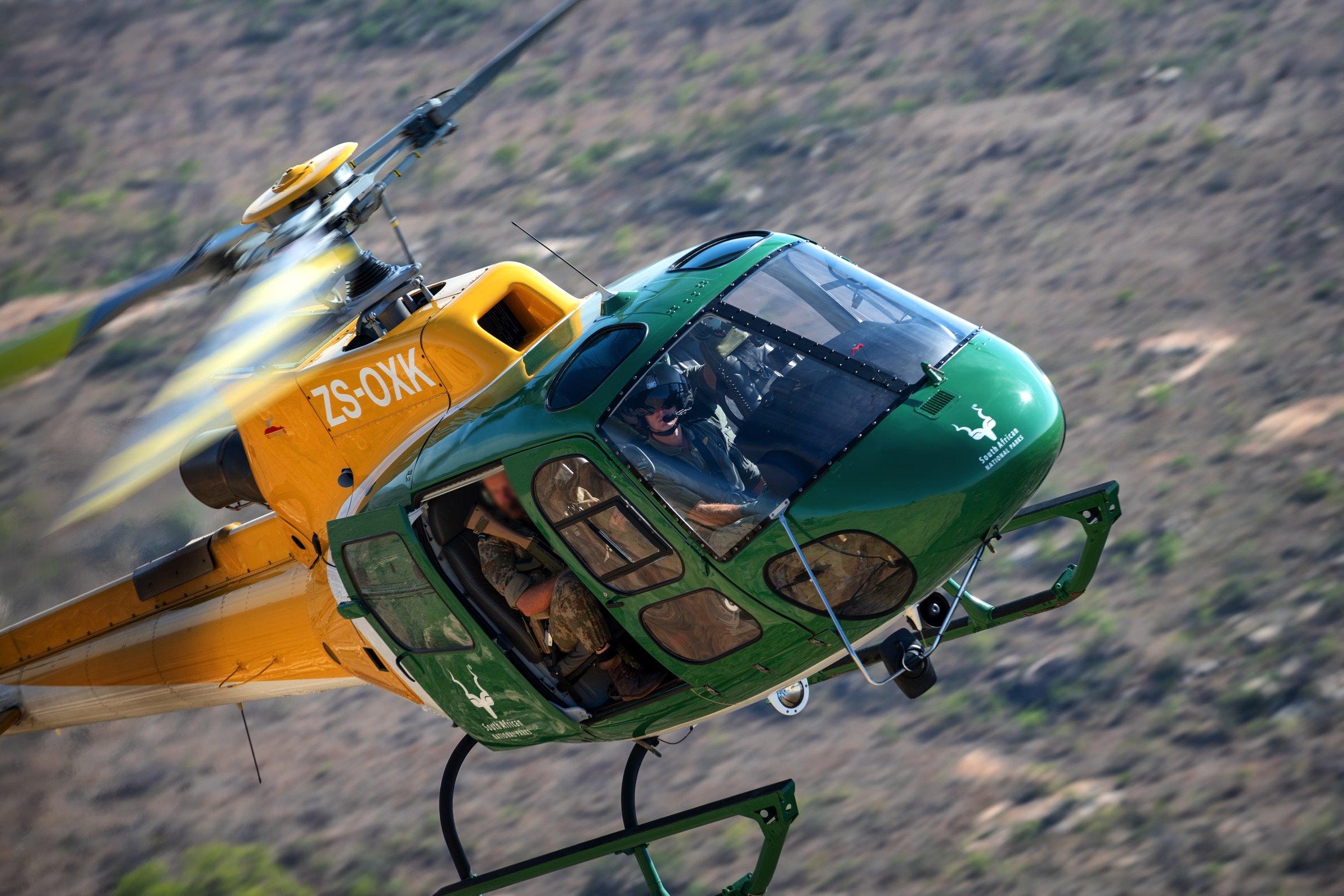Airbus Helicopters is to expand certification of its Crash Resistant Fuel System (CRFS) to the AS350 B3 and EC130 B4 helicopters, and when certified, the kit will be offered at cost to operators.

It will also be expanding its policy of installing the CRFS in newly-produced H125s. Currently, this is only standard in H125s manufactured in the U.S.; operators taking delivery of the aircraft from the company’s production line at its headquarters in Marignane, France, have the CRFS installation available as an option. Standard installation on all newly-produced will begin with aircraft manufactured in 2020.
The Airbus CRFS is already certified for the latest generation of the AS350 — the H125 — and is part of a standard production H130, the most modern variant of the EC130. But those who operate legacy variants of the types are currently reliant on a third party if they want to install a CRFS; Robertson Fuel Systems and StandardAero certified their CRFS for use in the models in December 2017.
While Airbus said there is a global fleet of around 1,500 AS350 B3s and 400 EC130 B4s, the company estimates that as few as 200 CRFS have been purchased for installation on these types.
According to Airbus, the Robertson/StandardAero CRFS is typically sold at between $100,000 to $120,000, excluding labor cost. Airbus will be offering its CRFS for the H125, AS350 B3 and EC130 B4 for $44,000.
“We found that the main barrier for customers to install the CRFS was price — it was cost,” said Axel Aloccio, head of Airbus’s intermediate single program. “So we are doing our best to incentivize our customers to go for the CRFS.”
The company’s announcement comes just over a year after five sightseeing passengers died following the fiery crash of a Papillon Airways-operated EC130 B4 in the Grand Canyon, bringing the issue of post-crash fires back into sharp focus.
In the following weeks, the parents of one of the passengers filed a lawsuit against the operator and Airbus, highlighting the lack of a CRFS in the accident aircraft.
The lawyer in that case had also represented David Repsher, the Flight For Life nurse who was severely burned following the crash of an H125, and who later received a $100 million settlement from Airbus and Air Methods Corporation.
However, Aloccio said the key driver behind Airbus’s decision to expand the CRFS certification and offer it at cost was simply a desire to improve the safety of the AStar fleet.
“We want to encourage our customers to make sure that they equip their aircraft with a CRFS because, beyond the legal action or the bad publicity for us, we are convinced it’s a good safety feature to invest on the aircraft,” he said. “We are not them. We cannot invest for them into a CRFS, but we feel that we have to do whatever is in our hands to make sure that they take the right decision, and so we are doing our maximum, which is to offer [the CRFS] at cost.”
Airbus hopes to have secured European Aviation Safety Agency certification of the CRFS for the AS350 B3 and EC130 B4 by the end of this calendar year, with approval from the Federal Aviation Administration to follow shortly afterwards. Deliveries of the CRFS will begin in the first quarter of 2020.
The manufacturer also announced plans to introduce an energy-absorbing crash resistant four-seat bench for passengers in the rear of the H125.
“This is something that we are doing because we want to, again, promote more safety for our operators, for our people flying the H125,” said Aloccio.
The type’s front seats, and those in the front and rear of the H130, are already crash resistant.
Airbus hopes to certify the bench “as early as possible,” but said that would likely be in 2020. The weight increase of the new bench would be “a few kilos” at most, said Aloccio, but the team’s target is to have no weight penalty at all.
The development of the bench represents something of a victory for Chris Emerson, the president and CEO of Airbus Helicopters’ U.S. subsidiary, Airbus Helicopters, Inc., who told Vertical at last year’s Heli-Expo that he would push the company to develop energy-absorbing seats for rear passengers.
“Anything is possible and I do believe that it is possible to find a better solution on the AStar back seats than we have today,” he said at the time.
Airbus is still to determine whether the bench will be a standard installation or offered as an option, but is leaning towards the former. The ability to retrofit the seat into fielded aircraft is still being explored, due to the need to determine whether structural reinforcements would be required below the seats.
In other moves aimed at improving safety in the H125 and H130, Airbus is developing a rotor strike alerting system and a wire detection system.
The rotor strike alerting system will work similarly to a parking radar on a car, with sensors that alert pilots if they are approaching an obstacle. The wire detection system would work in a similar manner.
Elan Head contributed reporting to this story.









